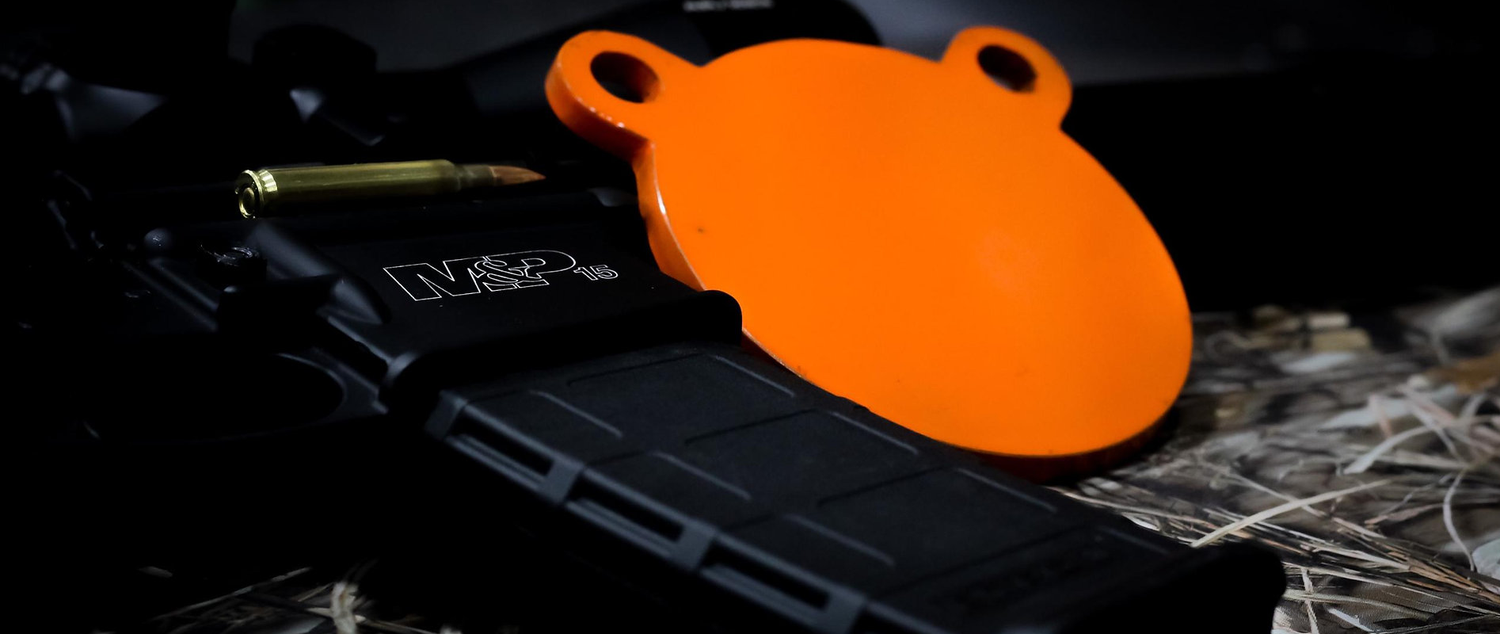Safety
A safe shooting experience for you and others are a primary concern at Precision Targets. Shooting sports can be a safe, enjoyable and rewarding activity, but as with most sporting activities, rules, guidelines and precautions must be followed to achieve these safety objectives. The following information must be read, understood and applied to minimize risk to shooters and spectators before using steel targets.
SAFETY GUIDELINES
The Cardinal Rules of Firearm Safety
- Things to know and understand about steel targets.
- Treat all firearms as though they are loaded.
- Point the muzzle in a safe direction at all times.
- Keep your finger outside of the trigger guard until you are on target and ready to fire.
- Be sure of your target and what is behind it.
UNDERSTAND STEEL TARGETS
Bullet fragmentation/ricochet a key concern when impacting steel targets or any other hard object. When a typical frangible bullet strikes the surface of steel target a “splash zone” is created
consisting mostly of bullet fragments deflecting away from the target at a high velocity. The majority of these deflecting fragments project in expanding ring at a 20 degree angle from the face of the target.
The following steps must be taken to maximize safety and minimize unsafe and unpredictable bullet fragmentation.
- Ensure targets are facing downward at a 20 degree angle from perpendicular and/or loosely hanging to allow the target face to absorb energy and swing back deflecting the majority
of the fragments to the ground below the target.
- Ensure placement of objects such as other targets, target stands and any other solid objects must remain out of this “splash zone” to reduce the potential secondary ricochet that may go in an unsafe direction. Stagger multiple targets or use materials such as plywood to absorb fragments between targets. Remove hard objects on the ground such as rocks or concrete or cover with sand or fine gravel.
- Inspect and replace if required any steel target that is deformed or significantly damaged that may present an unsafe and unpredictable bullet fragmentation pattern, such as cratering or deep pitting. Never shoot on steel targets that have been damaged or deformed in anyway.
- Inspect and replace if required any target hardware that may present an unsafe and unpredictable bullet fragmentation pattern, such as bolts, hooks and stands.
Ensure proper shooting distances
Shooters and spectators should be a minimum distance of 10 yards when using handgun calibers.
Shooters and spectators should be a minimum distance of 100 yards when using high power
rifle calibers
Ensure use of proper ammunition
Never use rifle or magnum calibers on handgun/pistol rated targets.
Never use ammunition that exceeds 3000 feet per second at the muzzle.
Never use ammunition that travels below 750 feet per second.
Never shoot BB’s, steel shot, or shotgun slugs at steel targets.
Never use more powerful ammunition than the target is rated for (steel core, green
tip, hardened, armor piercing, etc.)
Ensure proper personal protective equipment
Always wear ANSI or OSHA approved safety glasses with wrap-around or side shields to protect your eyes. (Shatter resistant eye protection)
Always wear shooting rated hearing protection to protect your hearing.
Shooters and spectators must wear long pants, long sleeve shirts, a cap or hat with a brim, and closed toed shoes.
Spectators must stand behind the shooter and observe all safety rules and precautions.

